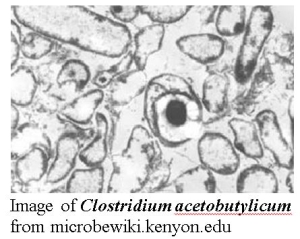Tech Tip
Acetone, butanol and other ketones are often detected at low levels during anaerobic bioremediation (Jacob et al., Battelle Bioremediation Symposium Proceedings, 2005).
 These compounds can be produced during anaerobic fermentation by the bacterium Clostridium acetobutylicum and a variety of related organisms growing on substrates such as potatoes, corn, rye, millet, cheese whey, apple pomace, algal biomass, (Woods, Trends in Biotechnology 13: 259-264, 1995) and soybean oil that can be used to enhance reductive dechlorination in groundwater. If and when they are formed, these compounds are readily biodegradable under both aerobic (Tabak et al., J. WPCF 53: 1503-1518, 1981) and anaerobic conditions (Eichler and Schink, Arch Microbiol 143: 60-66, 1985; Platen and Schink, Arch Microbiol 149: 136-141, 1987) and are not expected to migrate significant distances from anaerobic treatment zones.
These compounds can be produced during anaerobic fermentation by the bacterium Clostridium acetobutylicum and a variety of related organisms growing on substrates such as potatoes, corn, rye, millet, cheese whey, apple pomace, algal biomass, (Woods, Trends in Biotechnology 13: 259-264, 1995) and soybean oil that can be used to enhance reductive dechlorination in groundwater. If and when they are formed, these compounds are readily biodegradable under both aerobic (Tabak et al., J. WPCF 53: 1503-1518, 1981) and anaerobic conditions (Eichler and Schink, Arch Microbiol 143: 60-66, 1985; Platen and Schink, Arch Microbiol 149: 136-141, 1987) and are not expected to migrate significant distances from anaerobic treatment zones.
